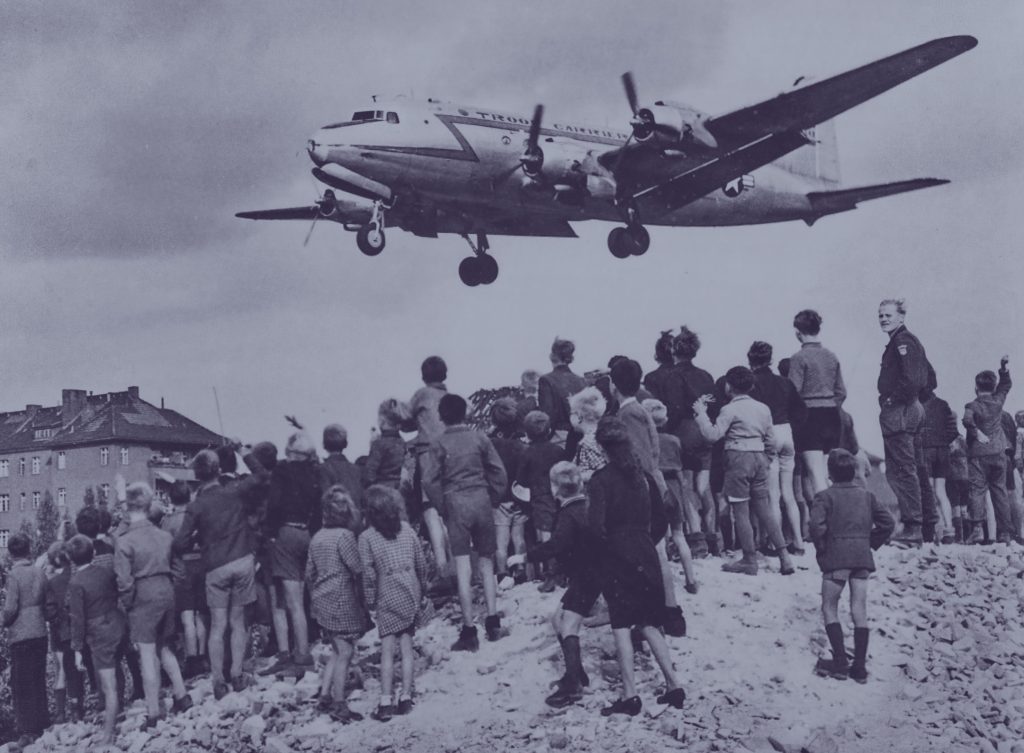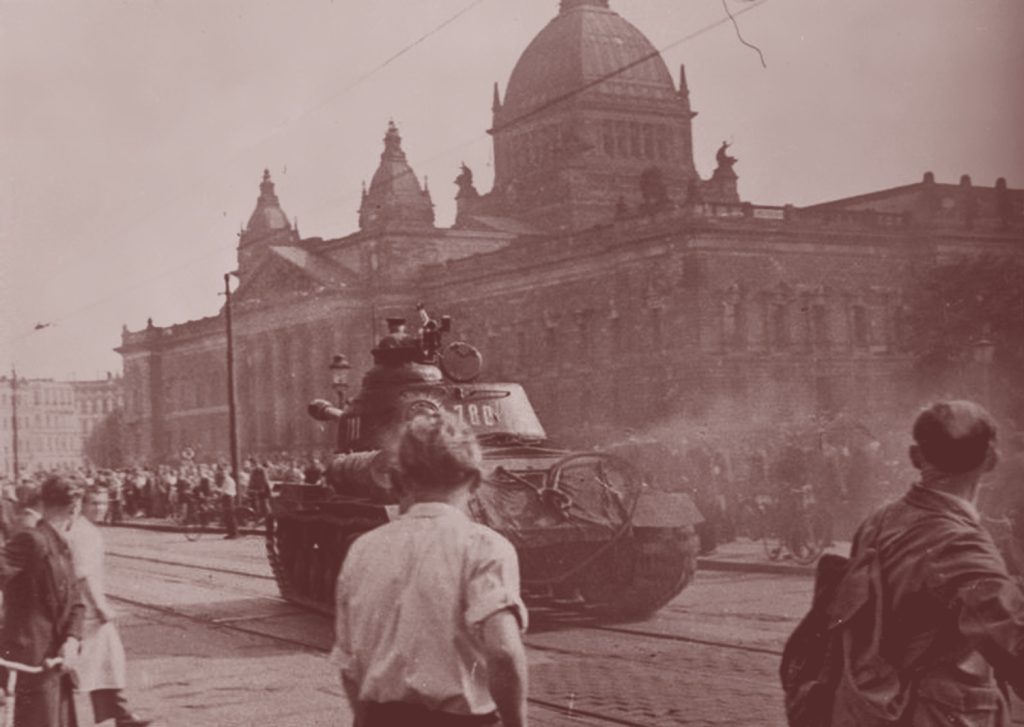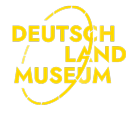
The division of Germany
1945
The division of Germany
Two states, one economic miracle
The end of the Second World War saw Germany occupied and many of her cities reduced to rubble. Disagreement between the occupying powers then cemented the division of Germany into two states with fundamentally different economic and political systems. The West German economic miracle soon provided its citizens with an enhanced quality of life, which motivated increasing numbers of East Germans to leave for the west.
Defeat and airlift: the foundation of West and East Germany
The victorious powers (Great Britain, the USA, France and the Soviet Union) divided Germany into four zones of occupation. Berlin, the capital city, was divided into four sectors. Germany lost extensive territories in Central and Eastern Europe, from where twelve million Germans were expelled. The damage and destruction wrought by the war caused widespread hunger and an acute housing shortage.
Ideological tensions between the victorious allies and differences in their vision for the new Germany led to conflict over Berlin. Although the capital city was administered by all four allies, its location deep in the Soviet zone of occupation meant that the Soviet Union was able to blockade West Berlin in 1948 in order to blackmail the western powers. The Western powers reacted by organizing an airlift to supply the beleaguered city and after a year the Soviets abandoned the blockade. Success in keeping the lights on in Berlin cemented a new relationship of trust between West Germans and their former enemies from the west.
After the impossibility of unification became clear, the former Allies took the decision in 1949 to establish two separate German states. Whilst the British, Americans and French merged their zones of occupation to form the Federal Republic of Germany as a parliamentary democracy in 1949, the Soviets imposed Socialism in the German Democratic Republic (DDR).

A “raisin bomber” flying during the Berlin Air Lift Photograph by Henry Ries, 1948 (source: US Air Force via Wikimedia Commons)
Germany in the 1950s: uprising and economic miracle
The measures required to transform the DDR into a centrally-planned socialist economy placed a heavy burden on industry and depressed the general standard of living. Reacting to the imposition of what amounted to a pay cut, more than a million people took to the streets of East Germany on 17 June 1953 to demonstrate for political reform. The uprising was violently suppressed with the assistance of Soviet troops. Subsequent years saw the establishment of a repressive surveillance state to prevent the development of political opposition.

Putting down the East German uprising of 1953: Soviet tanks on the streets of Leipzig on 17 June 1953 Anonymous photograph, 1953 (source: Federal Archives, B 285 picture 14676, CC-BY-SA 3.0)
With American support through the Marshall Plan, free-market West Germany experienced an economic boom. Referred to as the “Economic Miracle” due to its unexpected nature, the upswing resulted in low unemployment and increasingly widespread material prosperity. Growing numbers of DDR citizens saw a better future under capitalism and fled to West Germany. Seeking to stop the loss of their most skilled workers, the DDR closed its border and built the Berlin Wall on 13 August 1961.
Share article
1945
Defeated by the coalition of the Soviet Union, the USA, Great Britain and France, Germany was occupied and divided into four zones of administration.
Epochen im Museum

About the Deutschlandmuseum
An immersive and innovative experience museum about 2000 years of German history
The forest of the Varus Battle
Knowledge is just one click away
Embark on a journey through 2,000 years of German history. One country, 12 epochs. You’re invited to experience the Epoch Weeks at the Deutschlandmuseum. Every week we showcase an epoch that is also on display in the Deutschlandmuseum.
FAQ
Defeat in the Second World War resulted in the occupation of Germany by four different powers: Great Britain, the USA, France and the Soviet Union. Disagreement between the former allies over the political future of Germany led to the formation of two rival states: a capitalist and democratic West Germany and a communist East Germany under Soviet influence.
The West and East German states existed from their foundation in 1949 until reunification in 1990.
Whilst West Germany was established as a free market economy, the DDR followed the dictates of economic planning. These differences were reflected in the political sphere: the representative democracy with free, fair and secret elections to parliament in West Germany contrasted with the socialist dictatorship established in East Germany. Whilst there were many political parties, only one – the SED – had any power.
DDR stands for German Democratic Republic, BRD for Federal Republic of Germany. The two German states existed between 1949 and 1990.


